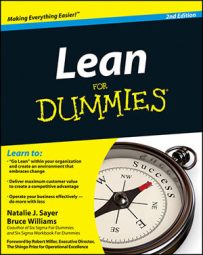Lean is a customer-centric methodology used to continuously improve any process through the elimination of waste in everything you do; it is based on the ideas of “Continuous Incremental Improvement” and “Respect for People.”
Focus on the fundamentals
The basic principles of Lean are
Focus on effectively delivering value to your Customer
Respect and engage the people
Improve the Value Stream by eliminating all types of waste
Maintain Flow
Pull Through the System
Strive for Perfection
Your customer tells you what they value
You customer defines value or value-added with the following three conditions:
It must transform the product or service.
The customer must be willing to “pay” for it.
It must be done correctly the first time.
If you don’t meet all three of these criteria, then you have non-value-added activities or waste.
What’s “waste” anyway?
Waste comes in three main forms:
Mura or waste due to variation
Muri or waste due to overburdening or stressing the people, equipment or system
Muda also known as the “seven forms of waste”
The following are the wastes most commonly associated with Lean:
Transportation: Is there unnecessary (non-value-added) movement of parts, materials, or information between processes?
Waiting: Are people or parts, systems or facilities idle — waiting for a work cycle to be completed?
Overproduction: Are you producing sooner, faster, or in greater quantities than the customer is demanding?
Defects: Does the process result in anything that the customer would deem unacceptable?
Inventory: Do you have any raw materials, work-in-progress (WIP), or finished goods that are not having value added to them?
Movement: How much do you move materials, people, equipment, and goods within a processing step?
Extra Processing: How much extra work is performed beyond the standard required by the customer?
Sometimes you will also hear “the disengagement of people" identified as a form of muda.

